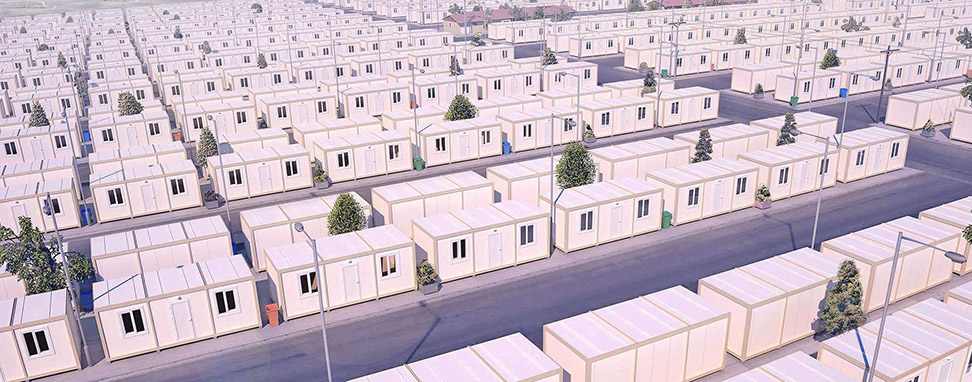Insulating and controlling the temperature in metal container houses is crucial due to the high thermal conductivity of metal. Several strategies are commonly considered:
1. Spray Foam Insulation
Advantages: Provides excellent thermal resistance, seals cracks and gaps, acts as a vapor barrier.
Disadvantages: Can be more expensive than other insulation types, requires professional installation.
2. Rigid Foam Insulation
Types: Expanded Polystyrene (EPS), Extruded Polystyrene (XPS), Polyisocyanurate.
Advantages: High R-value per inch, moisture-resistant, lightweight, easy to install.
Disadvantages: Can be more costly, may need additional layers for optimal insulation.

3. Blanket Insulation (Batt and Roll)
Materials: Fiberglass, mineral wool, natural fibers.
Advantages: Cost-effective, easy to install, available in various thicknesses.
Disadvantages: Can be less effective at sealing air gaps, requires vapor barrier in humid climates.
4. Reflective or Radiant Barrier Insulation
Materials: Aluminum foil, reflective coatings.
Advantages: Reflects radiant heat, effective in hot climates, thin and lightweight.
Disadvantages: Less effective in cold climates, needs an air gap to work properly.
5. Structural Insulated Panels (SIPs)
Construction: Sandwich of foam insulation between two structural facings (OSB, plywood).
Advantages: High insulation value, fast to assemble, strong and durable.
Disadvantages: More expensive, requires precise manufacturing and fitting.
6. Natural and Recycled Insulation Materials
Examples: Sheep wool, cotton, hemp, cellulose.
Advantages: Eco-friendly, sustainable, good thermal properties.
Disadvantages: Can be more expensive, may need more thickness for equivalent R-value.
7. Green Roofs
Components: Layer of vegetation and soil on the roof.
Advantages: Provides natural insulation, reduces heat island effect, promotes biodiversity.
Disadvantages: Adds weight, requires structural reinforcement, needs maintenance.
8. Thermal Mass
Materials: Concrete, brick, stone.
Advantages: Absorbs and slowly releases heat, stabilizes indoor temperatures.
Disadvantages: Heavy, may require additional structural support, less effective without proper design.
9. Ventilation and Air Circulation
Methods: Mechanical ventilation systems, natural ventilation designs, ceiling fans.
Advantages: Enhances indoor air quality, controls humidity, can reduce cooling load.
Disadvantages: Requires energy (for mechanical systems), needs careful design to be effective.
10. External Shading and Cladding
Techniques: Overhangs, pergolas, external louvers, reflective cladding.
Advantages: Reduces direct solar gain, protects against weather, enhances aesthetics.
Disadvantages: Can be costly, needs careful design to balance light and shade.
11. Interior Finishes and Treatments
Materials: Gypsum board, wood paneling, thermal paint.
Advantages: Adds an additional layer of insulation, improves aesthetics, can enhance comfort.
Disadvantages: May not significantly improve thermal resistance on their own, requires combination with other insulation methods.
Each strategy can be tailored to the specific climate, budget, and design preferences of the container house project. Combining multiple methods often yields the best results for comprehensive insulation and temperature control.








